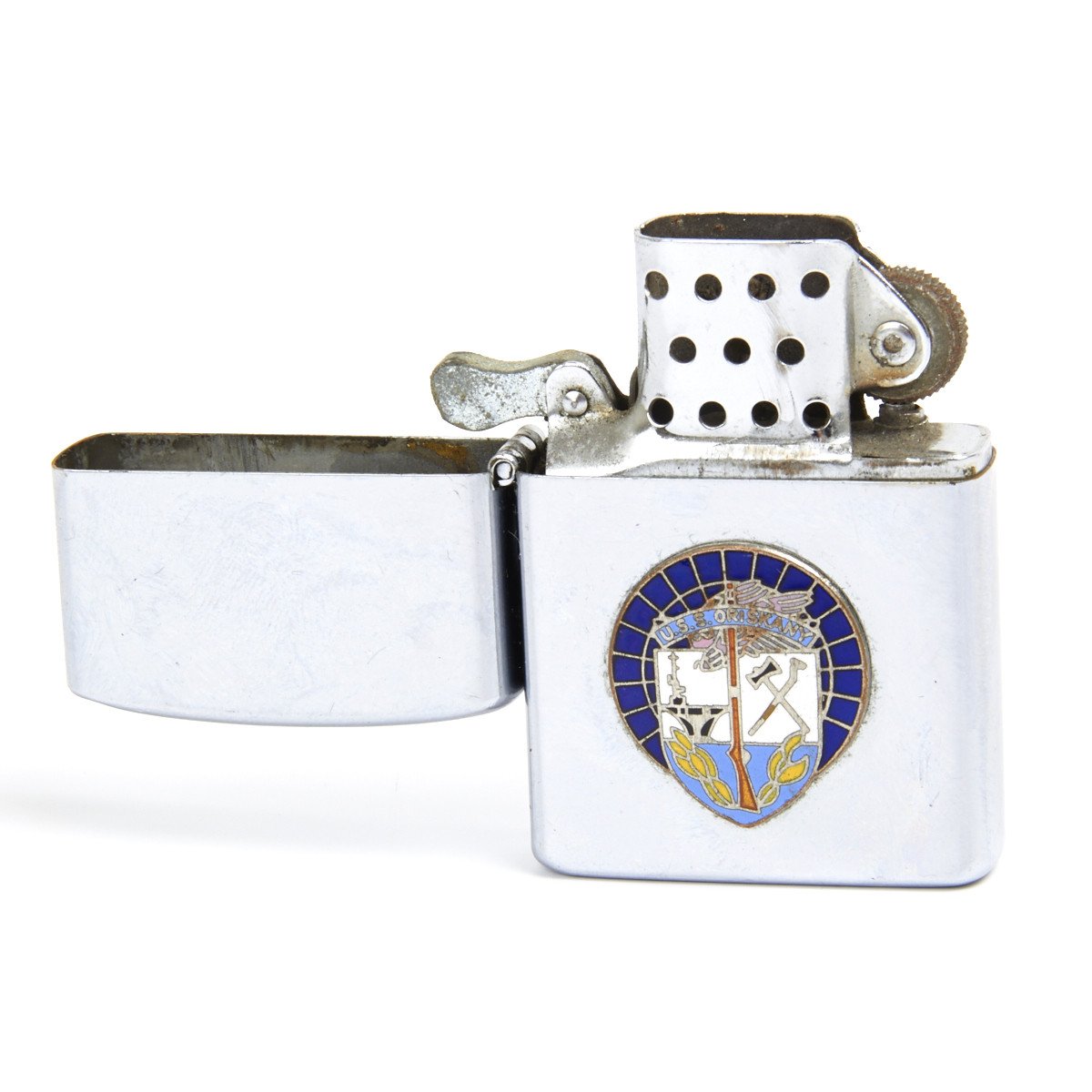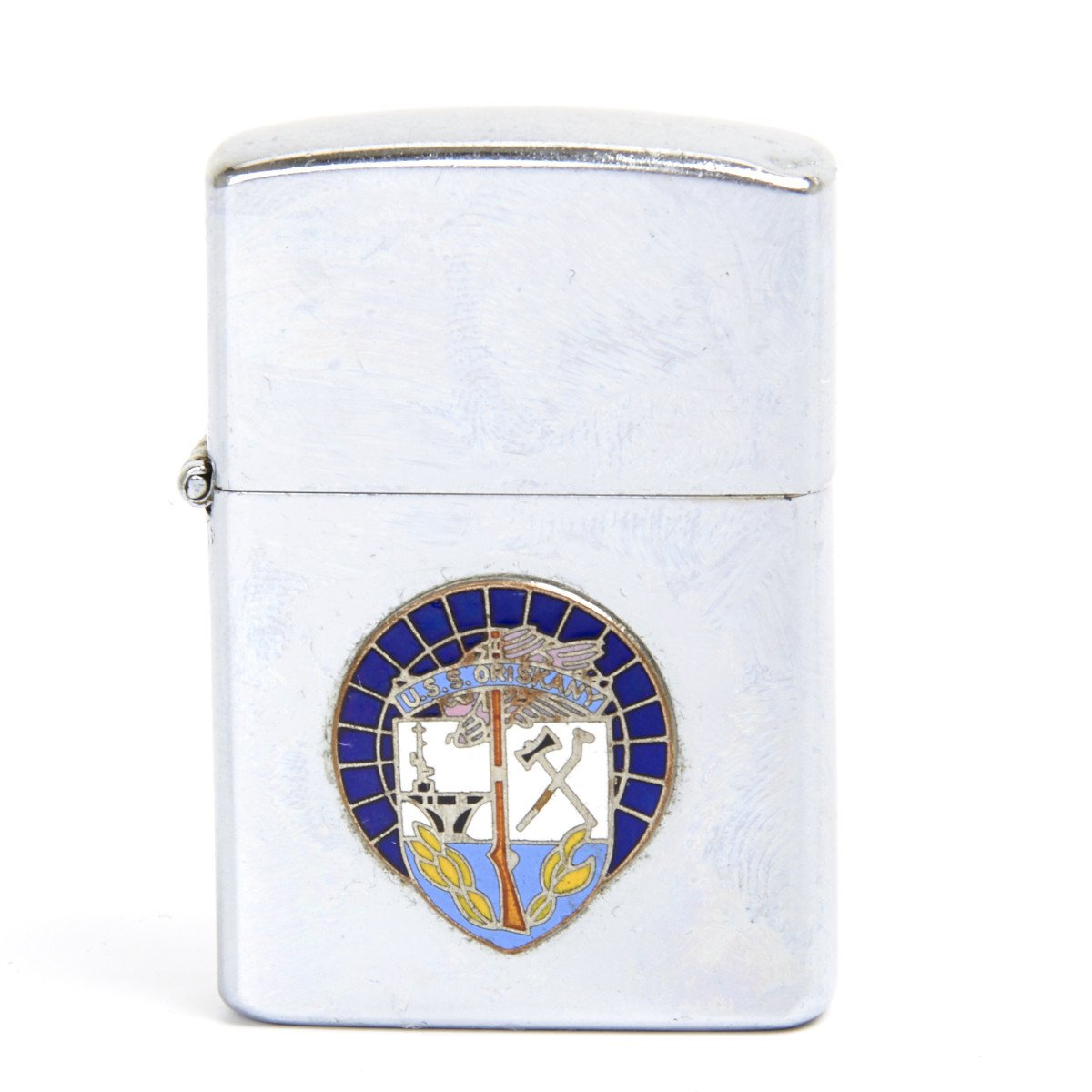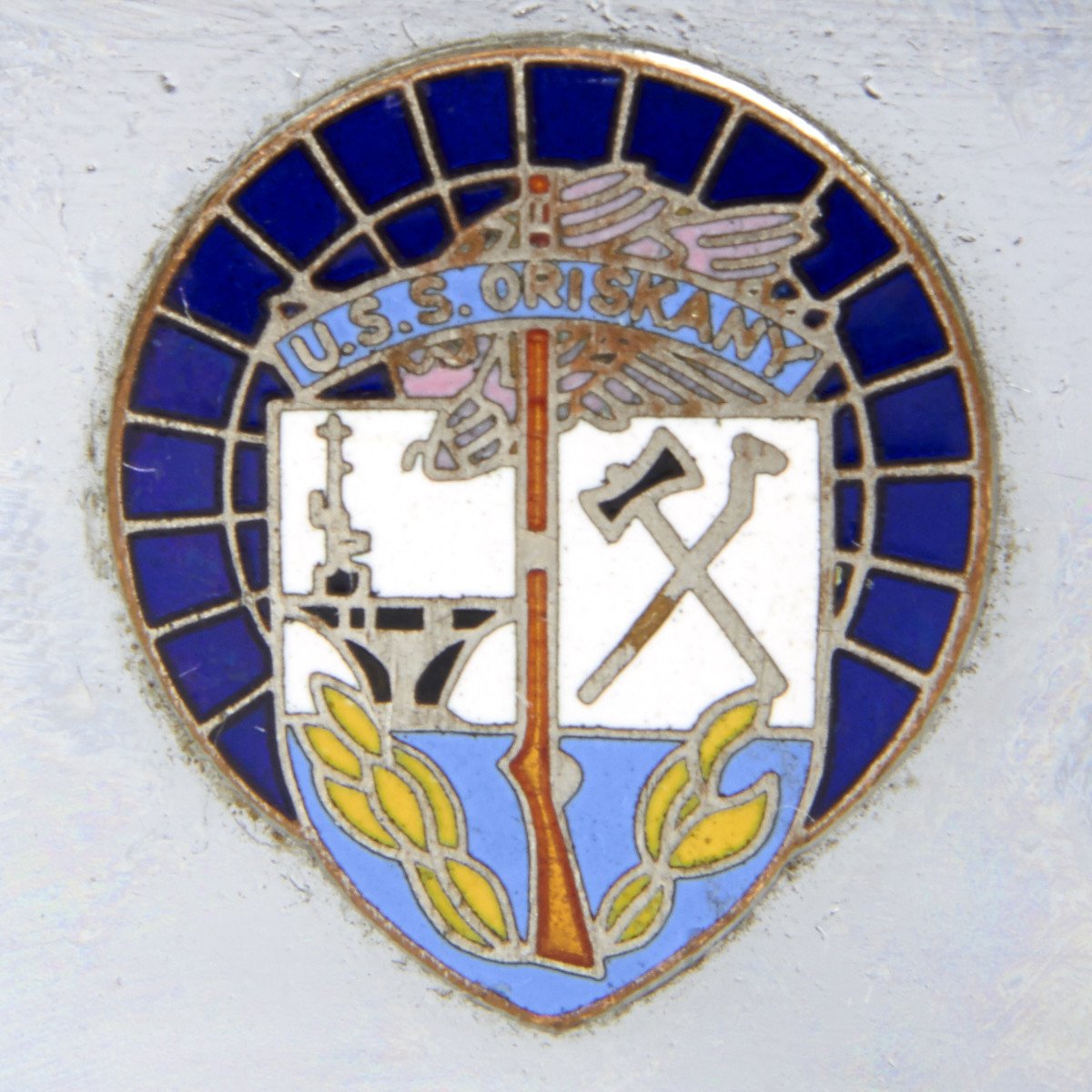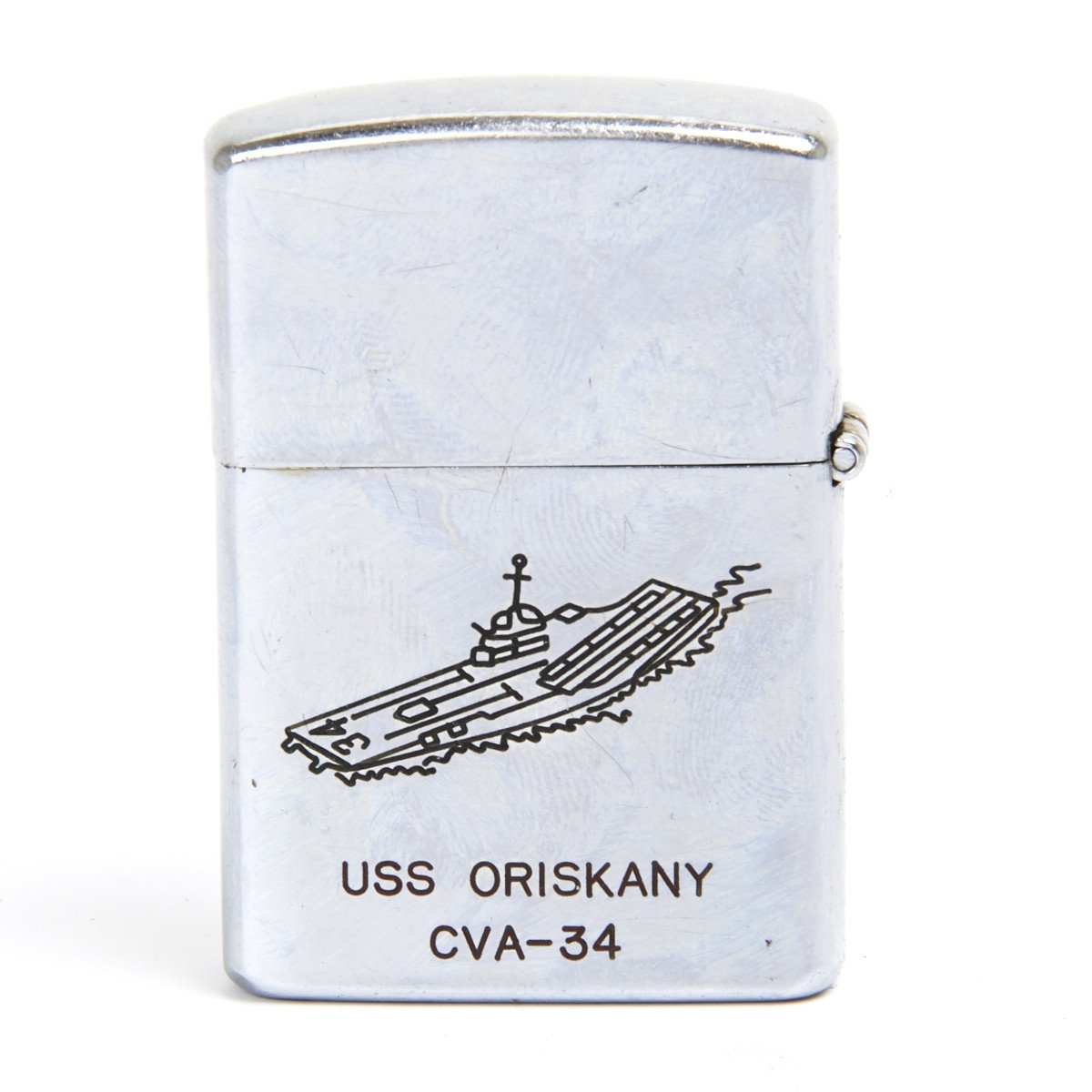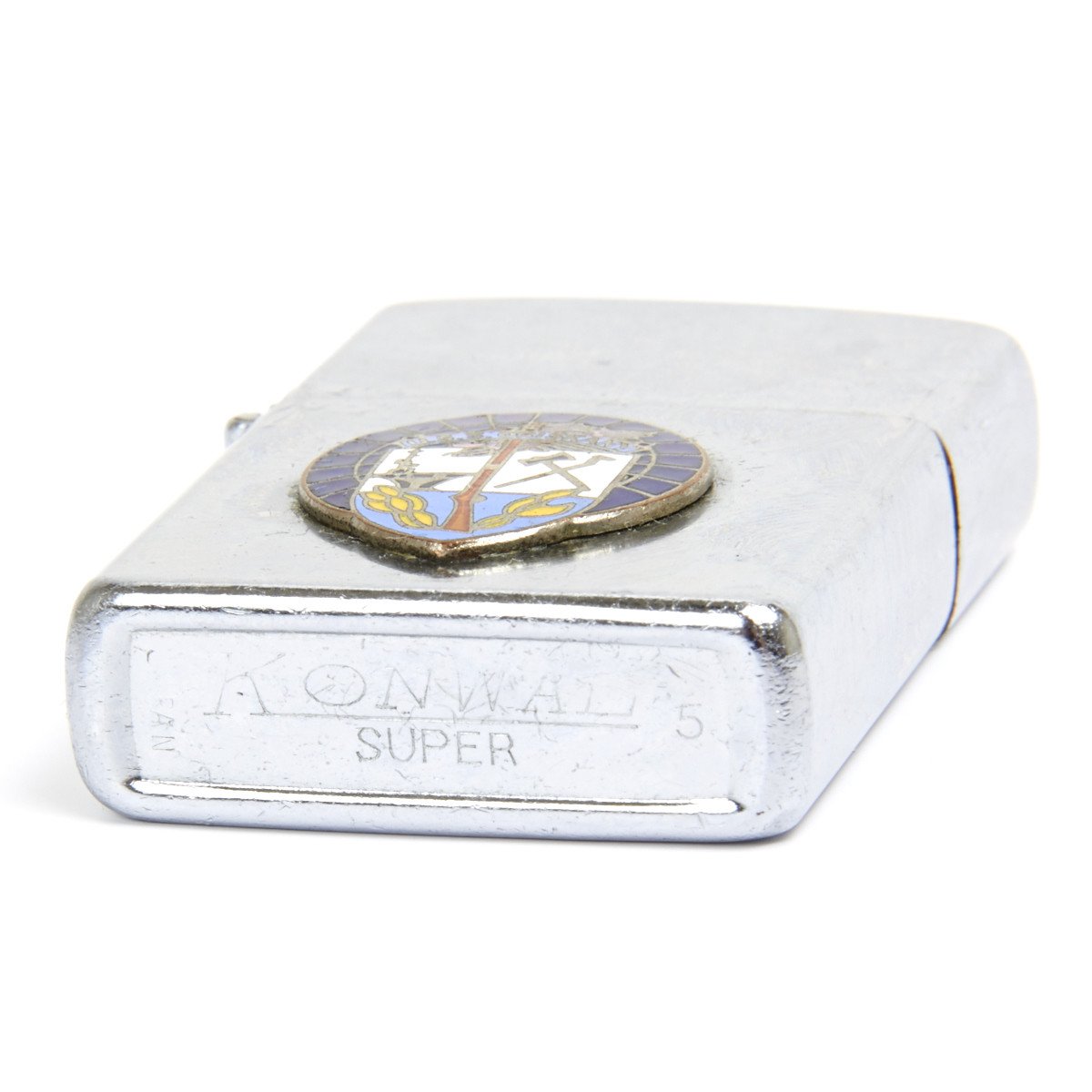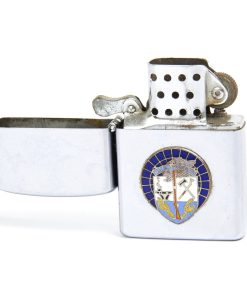Original 1951 Korean War Era Zippo Style Lighter of the USS Oriskany- KONWAL “SUPER” Original Items
$ 125,00 $ 50,00
Original Item: Lighters could be customized with regimental cyphers and engravings, and were purchased by GIs returning home as a memento of their military service in the specific theatre of operation.
Excellent vintage ZIPPO style windproof lighter circa 1951 made by KONWAL of Japan. This model is called the KONWAL “SUPER”.
USS Oriskany (CV/CVA-34) nicknamed Mighty O,[1] and occasionally referred to as the O-boat was one of the few Essex-class aircraft carriers completed only after World War II for the United States Navy. The ship was named for the Revolutionary War Battle of Oriskany.
The history of Oriskany differs considerably from that of her sister ships. Originally designed as a “”long-hulled”” Essex-class ship (considered by some authorities to be a separate class, the Ticonderoga class) her construction was suspended in 1947. She eventually was commissioned in 1950 after conversion to an updated design called SCB-27 (“”27-Charlie””), which became the template for modernization of 14 other Essex-class ships. Oriskany was the final Essex-class ship completed. Oriskany departed New York on 6 December 1950, for carrier qualification operations off Jacksonville, Florida, followed by a Christmas call at Newport, Rhode Island. She resumed operations off Jacksonville through 11 January 1951, when she embarked Carrier Air Group 1 for shakedown out of Guantanamo Bay, Cuba.
After major modifications at New York Naval Shipyard from 6 March to 2 April, she embarked Carrier Air Group 4 for training off Jacksonville, then departed Newport on 15 May 1951, for Mediterranean deployment with the 6th Fleet.
Having swept from ports of Italy and France to those of Greece and Turkey, from there to the shores of Tripoli, Oriskany returned to Quonset Point, Rhode Island on 4 October 1951. She entered Gravesend Bay, New York on 6 November 1951 to offload ammunition and to have her masts removed to allow passage under the East River Bridges to the New York Naval Shipyard. Overhaul included the installation of a new flight deck, steering system, and bridge. Work was complete by 15 May 1952, and the carrier steamed the next day to take on ammunition at Norfolk, Virginia from 1922 May. She then got underway to join the Pacific Fleet, steaming via Guantanamo Bay, Rio de Janeiro, Cape Horn, Valparaíso, and Lima, arriving San Diego, California on 21 July.
Following carrier qualifications for Carrier Air Group 19, Oriskany departed San Diego on 15 September 1952, to aid United Nations forces in Korea. She arrived Yokosuka on 17 October and joined Task Force 77 off the Korean Coast on 31 October. Her aircraft struck hard with bombing and strafing attacks against enemy supply lines and coordinated bombing missions with surface gun strikes along the coast. Her pilots downed two Soviet-built MiG-15 jets and damaged a third on 18 November.[4]
Strikes continued through 11 February, attacking enemy artillery positions, troop emplacements, and supply dumps along the main battlefront. Following a brief upkeep period in Japan, Oriskany returned to combat on 1 March 1953. She continued in action until 29 March, called at Hong Kong, then resumed air strikes on 8 April. She departed the Korean Coast on 22 April, touched at Yokosuka, and then departed for San Diego on 2 May, arriving there on 18 May.
Fast Shipping with Professional Packaging
Thanks to our longstanding association with UPS FedEx DHL, and other major international carriers, we are able to provide a range of shipping options. Our warehouse staff is expertly trained and will wrap your products according to our exact and precise specifications. Prior to shipping, your goods will be thoroughly examined and securely secured. We ship to thousands clients each day across multiple countries. This shows how we're dedicated to be the largest retailer on the internet. Warehouses and distribution centres can be located throughout Europe as well as the USA.
Note: Orders with more than one item will be assigned a processing date depending on the item.
Before shipping before shipping, we'll conduct a thorough inspection of the items you have ordered. Today, the majority of orders will be delivered within 48 hours. The delivery time will be between 3-7 days.
Returns
The stock is dynamic and we cannot completely manage it because multiple stakeholders are involved, including our factory and warehouse. So the actual stock may alter at any time. It's possible that you may not receive your order once the order has been made.
Our policy is valid for a period of 30 days. If you don't receive the product within 30 days, we are not able to issue a refund or an exchange.
You can only return an item if it is unused and in the same state as the day you received it. You must have the item in its original packaging.
Related products
Uncategorized
Uncategorized
Uncategorized
Uncategorized
Uncategorized
Band of Brothers ORIGINAL GERMAN WWII Le. F.H. 18 10.5cm ARTILLERY PIECE Original Items
Uncategorized
Uncategorized
Uncategorized
Uncategorized
Armoured Fighting Vehicles of the World: AFVs of World War One (Hardcover Book) New Made Items
Uncategorized
Uncategorized
Australian WWII Owen MK1 Machine Carbine SMG Custom Fabricated Replica with Sling Original Items
Uncategorized
Uncategorized
Uncategorized
Armored Burgonet Helmet & Polearm from Scottish Castle Leith Hall Circa 1700 Original Items
Uncategorized
Uncategorized
Uncategorized
Uncategorized
Uncategorized
